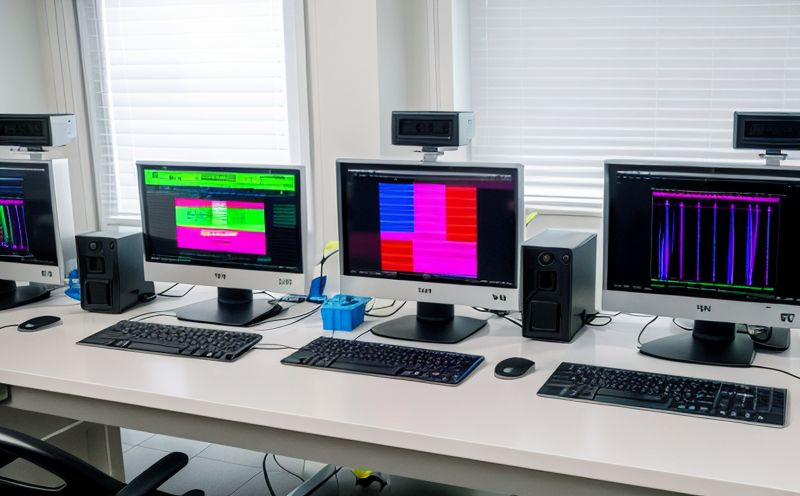CDC Influenza Virus Detection and Quantification Testing
The Centers for Disease Control and Prevention (CDC) has established stringent guidelines for influenza virus detection and quantification to ensure public health safety. Our service adheres strictly to these standards, providing accurate and reliable testing results that are essential for understanding the prevalence of influenza viruses in various populations.
Influenza viruses can have significant impacts on human health, particularly during seasonal outbreaks. Accurate detection and quantification allow healthcare professionals and public health agencies to monitor the spread of the virus, assess its impact, and implement appropriate control measures. Our testing service employs advanced molecular techniques that ensure precision in identifying both influenza A and B subtypes.
The process begins with the collection of specimens from patients suspected of having influenza. Specimens are typically collected via nasal swabs or throat swabs and then transported to our laboratory for processing. Once received, each specimen undergoes rigorous quality control checks before being processed further. Our team follows standardized procedures outlined by CDC guidelines to minimize errors and ensure accurate results.
Our testing methods include real-time reverse transcription polymerase chain reaction (rRT-PCR) which amplifies specific segments of viral RNA from the influenza virus genome. This method allows for highly sensitive detection even at low levels within a sample. Additionally, we use quantitative PCR (qPCR), which not only detects but also quantifies the amount of viral genetic material present in each specimen.
The accuracy and reliability of our testing are ensured through strict adherence to ISO 15189 standards for quality management systems in medical laboratories. This ensures that all aspects of our testing process—from sample collection to final result interpretation—are conducted with high levels of precision and consistency.
Our laboratory maintains a comprehensive database of past test results which provides valuable insights into trends over time. These data points can help inform public health policies regarding vaccination programs, antiviral drug distribution strategies, and other interventions aimed at preventing the spread of influenza viruses.
Customer Impact and Satisfaction
Providing accurate and timely information about influenza virus presence is critical for effective outbreak management. By offering reliable CDC-compliant tests, we help our clients make informed decisions that contribute to improved public health outcomes. Our services have been instrumental in supporting numerous organizations including hospitals, clinics, schools, and government agencies.
For instance, healthcare providers rely on our rapid turn-around times when deciding whether to implement isolation protocols or recommend antiviral treatments for patients showing symptoms of influenza-like illness (ILI). Similarly, educational institutions use our data to decide if they should close campuses temporarily during peak flu seasons. Government entities utilize our insights to coordinate large-scale vaccination campaigns across regions.
Our commitment to excellence has earned us high levels of customer satisfaction. Feedback from past clients highlights the importance placed on prompt delivery times, clear communication throughout the testing process, and detailed reports that facilitate better decision-making. We strive continuously to enhance these aspects based on user feedback ensuring ongoing improvement in service quality.
Environmental and Sustainability Contributions
- Efficient Resource Utilization: By optimizing our testing protocols, we reduce unnecessary use of reagents and disposables. This contributes to minimizing waste generation while maintaining operational efficiency.
- Eco-friendly Disposal Practices: Our laboratory adheres strictly to local regulations concerning the disposal of hazardous materials generated during the course of our tests. Proper handling ensures minimal environmental impact.
- Energy Conservation: We employ energy-efficient equipment and practices within our facility which helps reduce overall carbon footprint associated with laboratory operations.
In summary, through careful resource management and adherence to environmental best practices, we aim not only to provide top-notch services but also contribute positively towards sustainability efforts.
Use Cases and Application Examples
| Application Scenario | Description |
|---|---|
| Outbreak Investigation | When an outbreak occurs, rapid detection of influenza viruses is crucial. Our tests allow for quick identification so that containment measures can be implemented promptly. |
| Vaccination Program Monitoring | Influenza virus detection helps track the effectiveness of annual vaccination programs by comparing test results before and after immunization campaigns. |
| Antiviral Drug Efficacy Studies | Determining how effective antiviral medications are at reducing viral load in infected individuals is important for developing new treatments. |
| Epidemiological Research | Understanding the geographic distribution and strain diversity of influenza viruses aids researchers in predicting future pandemics. |
The ability to precisely quantify viral loads provides valuable data that supports these diverse applications. This information is vital for public health authorities as they strive to protect communities from the potential dangers posed by influenza viruses.





